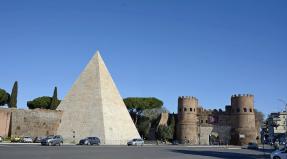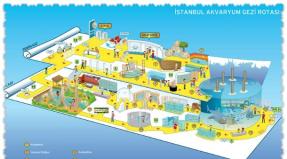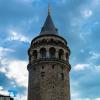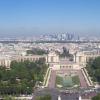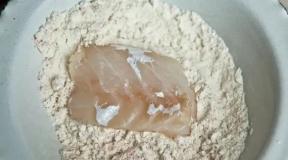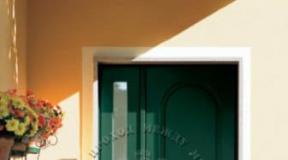The Altar of Peace is the story of the discovery of an ancient artifact. Altar of Peace: all about the ancient artifact Altar in Rome
Peace Altar- this is an altar surrounded by a beautifully decorated stone wall, the ornaments of which have a deep meaning. The Altar of Peace can also be called "the altar of the goddess Pax", since Pax in Roman mythology was the goddess of the world in both senses of the word.
V " Acts of the divine Augustus The following is written: “On my return to Rome from and Gaul, after the successful restoration of law and order in these provinces, the Senate decided during the consulate of Tiberius Augustus and Publius Quintilius (13 BC) in honor of my return to erect an altar Myra Augusta on the Campus Martius, where politicians, priests and vestals must offer sacrifice every year. Construction has been completed in 9 BC. As in the case of many other ancient Roman buildings, the names of the architects and sculptors who built the altar were not recorded anywhere and were forgotten.
Museum building, which now houses an altar
The Peace Altar of Augustus was built on Flaminia street, along which Octavian Augustus entered Rome after the campaign. The goddess of peace, Pax Augusta, had the same title as the emperor, i.e. augustus - "sacred" or "great", thus her full name can be translated as " great goddess of peace". The identical titles also symbolized the closeness of Pax and Octavian Augustus, and his ability to restore peace to the country.
 Altar of Peace in section
Altar of Peace in section
Architecture
The Altar of Peace consists of an altar, surrounded on all sides by a wall, that is, it looks like an antique shrine with temenos measuring 11 x 10 meters. Here, however, unlike the more ancient Greek temples, there was not one entrance, but two - in the eastern and western facades. They taper slightly at the top and are framed by platbands on the outside. Judging by the coins with the image of these gates that have come down to us, they had double doors. The material for most of the building was carrara marble, which was discovered shortly before construction began.
 Altar base with lesbian kimatiy (top) and weaving (bottom)
Altar base with lesbian kimatiy (top) and weaving (bottom)
 Base and foundation on the short side below relief with Mars
Base and foundation on the short side below relief with Mars
The main entrance to the altar of Peace was located on the side of the Field of Mars, from which a staircase of nine steps led inside (half of which has been preserved). The second entrance was from Flaminia Street. From here, one could go directly inside the altar, since it stood on a slope and therefore the level of the street was higher than the level of the field. Because of this, the foundation of the altar has a marble finish on only three sides. On the foundation are floor slabs in which holes in order to divert the blood of sacrificial animals and rainwater, since the altar of Peace has no roof which was extremely unusual for its time.
 Meander on the short side
Meander on the short side
 The original part of the base of the walls with lesbian cymation (immediately under the slabs with scrolls)
The original part of the base of the walls with lesbian cymation (immediately under the slabs with scrolls)
 The original drain in the foundation
The original drain in the foundation
On the floor slabs is base of walls in the Attic-Ionic style, decorated with a pattern in the form of weaving and a lesbian cymatium. An ornamental belt in the center of the wall divides it into two zones. From the outside it is decorated meander ribbon, symbolizing the course of life, and on the inside - palm leaves alternating with lotus buds (the belt is best preserved to the right of the entrance and in the center of the right long wall). In the lower part of the outer side of the altar, a very complex pattern with curls is made, while on the inside it is decorated only with vertical "slats". Probably an ancient master
 Coin showing an altar with acroteria
Coin showing an altar with acroteria wanted to create imitation of a wooden fence that surrounded the sanctuary at the time of its foundation. In the upper part, on the inside, stone garlands were made hanging between the skulls of bulls, and on the outside, a very interesting ornament was made depicting life-size people: four unrelated scenes on short facades and a procession on long ones.
wall cornice the sanctuary was not discovered. In addition, only fragments of capitals of Corinthian pilasters were found (on the side of the relief with Italy and on the inner capital to the right of the main entrance). All appliqués such as the three-band frieze, smooth frieze and cornice profile are not original. The top profiles definitely protruded forward to create balance with the pedestal. Should have been on the corners acroteria(sculptural ornaments). The smooth frieze was decorated.
 Left corner and its decoration
Left corner and its decoration
 Right corner near the relief with Mars
Right corner near the relief with Mars
 Doorway
Doorway
Altar
Altar for sacrifices stands on tufa pedestal with four high marble steps around the perimeter. It is not known how tall the entire structure was, but a modern reconstruction should be fairly accurate. Inside the altar, from the side of the main entrance, there is another staircase with four steps leading directly to the place of sacrifice. During the reconstruction, the frieze, mounted on a pedestal, was left unpolished to show that there was once a relief here. From this relief, only minor details have survived (probably personifications of the provinces and barbarians), which were not used during the restoration. To demonstrate the sequence of the arrangement of ornaments, only protruding profiles were restored that bordered the frieze from above and below: interlacing, twisted ornament and lesbian cymatium from below, astragalus, ionics with points and narrow ridges from above.
 The main entrance
The main entrance
 Stairs. The original and restored steps are clearly visible.
Stairs. The original and restored steps are clearly visible.
 Details of the relief of the pedestal
Details of the relief of the pedestal
 Unpolished pedestal
Unpolished pedestal
 Pedestal right
Pedestal right
The altar itself is on a prosthesis- "stand" on which those who performed the sacrifice stood. Its width is limited to two ornamental plates(the right one was assembled from fragments, and the left one was completely preserved). A narrow frieze on a whole slab has been preserved in its entirety only on the outside and half on the inside. To the right and left of the friezes are carved griffins with cruciform wings, ajar mouths and goat horns (only one horn is preserved on the far griffin on the left). In order to make this relief look complete on both sides, the griffins have two tails (a common technique in oriental art). Beneath the griffins, acanthus leaves can be discerned, which suggests that the altar was decorated with volutes, as were the outer walls. Above the griffins and small friezes on both slabs, ornaments are made in the form of a lying Latin letter S, also with acanthus leaves and scrolls. Unlike the outer walls of the sanctuary, where the relief serves only as decoration, these high reliefs are deeper and are part of the sculptural composition along with the griffins.
 The right slab, assembled from fragments
The right slab, assembled from fragments
 Griffin
Griffin
 Griffin
Griffin
Small procession on the altar
On the slabs and along the upper edge of the altar along its entire perimeter there is a narrow architectural belt (the left side is well preserved, and the right side is only partially). On the inside you can see figures of the six vestals with bowed heads. On each side they are accompanied by a lictor carrying a staff (apparitors). Some Vestal Virgins carry objects for making sacrifices; two of them are teenagers. The heads of many figures were damaged in antiquity and subsequently replaced with copies. On the outer surface of the side plates of the altar is depicted procession, which is headed by a young attendant at the sacrifice (camillus), a priest in a toga and two lictors. Here is a well-studied ceremonial theme - a procession of sacrificial animals. First comes sheep, which was probably supposed to be sacrificed to Janus, who is closely associated with Pax (the altar of Peace was consecrated at the end of his month). Next in procession are two cows already for the goddess Pax herself. The animals are looked after by several young men in short tunics. Two of them carry flat sacrificial tablets, and another one carries a sprig of laurel for sprinkling holy water. The very last young man looks back, to where there should have been a procession that has not survived to this day.
 small procession
small procession
 vestals
vestals
Here, in contrast to the outer walls of the sanctuary, is depicted annual ritual, not a one-time event.
Reliefs on external facades
In the lower part
The entire lower part of the sanctuary wall is covered swirl pattern. The original relief is best preserved under the plates with Aeneas and Italy and on the left long wall. The relief is created according to a single scheme: exactly in the middle of the long and short walls there are cups of large leaves of acanthus (bear's paw). Because of them, all other plants stretch, forming a magnificent pattern, incomparable with any similar frieze of antiquity. Among the curls you can see two lizards, hiding under the leaves, and birds sitting on the stems. From the center of the cups, thin "pistils" are extended upwards. At the top of each non-curling process is swan with spread wings. The birds look as weightless as flowers, and their curved necks, turned towards each other, resemble whorls of stems. In art, animals and plants are rarely depicted so similarly. Unlike creatures hiding in the depths of thickets, swans, like curls, create a feeling of dynamic growth, and emphasize its direction towards the light. They are also sacred the birds of the god Apollo, whom the prophetess Sibyl called the future king of the golden age. Apollo was associated with the family of Augustus, during whose reign this era of prosperity was to come.
 Surviving parts of long wall panels
Surviving parts of long wall panels
 Relief below the plate with Italy
Relief below the plate with Italy
 Vegetation relief below the plate with Mars
Vegetation relief below the plate with Mars
 Lizard (probably restored)
Lizard (probably restored)
Two lateral processes coming from the acanthus calyx on each relief, in fact, fill the entire free space of the frieze. On the long sides, every two curls they give a layer upwards, and on the short sides they end after a couple of bends.
 Bottom left wall
Bottom left wall
 High relief on the left (northern) wall
High relief on the left (northern) wall
The sculptor who created this outstanding pattern drew inspiration from architecture of the kingdom of Pergamon. Nevertheless, his drawing is the closest to nature - nowhere in Hellenistic art can one find the neighborhood of acanthus volutes, ivy leaves, vines and laurels. This combination can rightfully be considered a creation of the Augustan era. The creative power of his time is presented in this relief in its purest form.
 Almost completely restored high relief on the right wall
Almost completely restored high relief on the right wall
 Vegetable high relief on the right wall
Vegetable high relief on the right wall
A frieze with swirls can be interpreted as symbol of the wealth of the golden age(lat. aurea aetas), the main feature of which is the abundance of greenery and the growth of cultivated plants from the wild without human mediation.
 north wall
north wall
 High relief detail below the slab with Italy
High relief detail below the slab with Italy
 Beautiful high relief on the short side below the slab with Italy
Beautiful high relief on the short side below the slab with Italy
 Detail of vegetative high relief on the left long wall
Detail of vegetative high relief on the left long wall
 The junction of two plates is clearly visible
The junction of two plates is clearly visible
At the top
On the long sides
On the long sides are two processions, as if following from Flaminia Street to the main entrance to the altar. The idea of parallel processions was borrowed from the frieze of the Parthenon. The figures are done in two planes: the most important people are depicted closer to the viewer and are carved in high relief, while the figures of the background are carved in relief. In some places of the procession, for example, near Augustus and Libya, there are also figures of the third plan.
Right long wall
 Right frieze
Right frieze
The first third of the procession is badly damaged, so the person leading it remains unknown. In those places where the relief has been preserved at least partially, one can identify lictors in laurel wreaths. They are dressed in tunics and togas, and their faces are turned to the left. In the foreground, walking almost at the very beginning of the procession, an elderly man with a wrinkled neck is depicted, who cannot be identified. The figures of lictors are a kind of cordon. In the center of the first panel, it is no coincidence that one of them stands with his back to the audience - this is the so-called " nearest lictor"(Latin lictor proximus), who had no right to turn his back on his emperor. On the right section of the third panel, one can confidently identify the Octavian Augusta in a wreath and toga. The meaning of his gesture (the right hand is raised diagonally) is unknown - it is probably part of a ceremony unknown to us. At the beginning of the procession, there were most likely 12 lictors - a number that in 19 BC. the emperor himself approved "always and everywhere." It is possible that two young men dressed in togas to the right and left of Augustus were consuls 13 BC., but then one of them must have been Tiberius, the stepson of Augustus. However, none of these figures possess his characteristic cold aristocratic features, so the identity of these people remains an open question.
 Right wall
Right wall
The emperor is followed three flames(lat. Flamines maiores) - priests of the main Roman deities (Jupiter, Mars and Quirinus). They are easily distinguished by the fact that they are wearing leather caps with a pointed top (galerus), and over the tog they wear mantles (laens). The priest closest to Augustus has his right hand raised, which can be interpreted either as a prayer to the goddess of Peace, or as a greeting to the emperor. On his left hand, he wears the same ring as the next figure that looks behind him. The third flamen from the first row of figures in his right hand holds a small twig, which the priests carried with them when they went to the sacrifice to drive away the crowd. All three flamingos are unusually young, perhaps because Augustus himself appointed them recently. fourth flamen, an elderly man, is on the second level of the relief. It is likely that this was the priest of the deified Julius Caesar, whom the emperor allowed to go along with the main flames as a sign of respect for his father. This is most likely Sextus Appuleus, the grandson of Augustus' half-sister.
 The original procession was painted
The original procession was painted
The flamingos are followed by a young man with a covered head, who carries a ceremonial ax (sakena). He has recently been identified as Flamin lictor accompanying flamina dialis. However, a tall, emaciated man following him, whose head is also covered, could also be a flamin lictor. His features are like Agrippa who did not live to see the completion of the altar. Perhaps that is why the man's face in the background is turned towards him and expresses grief and suffering.
Holding on to Agrippa's toga little boy, who is touched encouragingly on the head by a woman in the background. A boy with puffy cheeks and tangled curls is a barbarian prince. Both mother and child wear ribbon diadems on their heads - a sign of Eastern and Hellenistic sovereigns. It is known that many children of foreign rulers lived in Rome with their mothers, who were not prisoners, but voluntarily guaranteed a good relationship between their people and Rome.
 Damaged Start of Procession
Damaged Start of Procession
The woman standing behind the boy in a dignified pose has very harmonious facial features. Apart from Augustus himself, she is the only one who wears a laurel wreath on her covered head. She was identified with a fairly high probability as Libya. She was probably a priestess, queen of the sacred ritual (Latin regina sacrorum). Livia must have been closely associated with the rite held at the altar of Peace, since its consecration was scheduled for her birthday (30). She is accompanied by a young man, perhaps Tiberius. It is unusual that neither he nor the other men from the second half of the procession wear patrician shoes (calcei), although they come from the most noble families of Rome. Perhaps this means that the end of the procession, in which there are many women and children, was less official.
 middle part of the procession
middle part of the procession
The couple behind Tiberius is Druz the Elder, the second son of Libya, and his wife Antonia the Younger, the niece of Augustus, who leads the way. A small boy with a bulla (amulet) around his neck, dressed in a toga, whom she leads by the right hand, is their two-year-old son Germanicus. Her face is turned to her husband, with whom she tries to meet eyes. This is the only scene in the entire procession where emotions break through the restraint.
In the background, between the couple, the head of a young woman is seen applying finger to lips. On the opposite, left long wall, in the same place, an elderly woman is depicted, also calling for silence. At this point inside, the sanctuary of the altar begins. Women remind viewers of the ceremonial silence that must be observed. In various cults, there is a role of "keeper of silence" (silentaria), which was usually performed by women.
 End of the procession on the right wall
End of the procession on the right wall
The paludamentum (military cloak) of Drusus the Elder is held by a small boy who, like Germanicus, wears a bulla (his head has been restored). A woman with a head covering, who can be identified as Anthony the Elder, the sister of Drusus' wife. She was married to Lucius Domitius Ahenobarbus, which may be a young man in a toga behind her. The girl in front of him and the said boy are their children, Domitia and Domitius(his son will become Emperor Nero in the future). The person walking in front of Antonia has not been identified. It is also unknown who the man between her and her husband was. Maybe it was a poet Horace who wrote two odes to Augustus' return home.
At the end, the procession ended with a narrow relief panel, which has been lost. The most recent figure was a noble Roman woman, in front of whom was a woman with short hair (probably a maid)
Left long wall
 Left frieze
Left frieze
The left side of the frieze of the altar of Peace was badly damaged as a result of unsuccessful restoration. None of the high relief heads of people in the foreground are authentic. Some of the bas-relief heads of the participants in the background procession were also damaged, due to which the original composition lost its balance and compactness. This is especially true of the first panel, which was kept in the Vatican until 1954.
 Procession on the left wall
Procession on the left wall
 Color version of the relief on the left wall
Color version of the relief on the left wall
At the head of the procession are two lictors. Behind them in the foreground are three men, the more important of which is the middle one, whose head is covered. Between him and the one in front is a young man dressed in a toga who is holding a square box of incense. The man with the head covering was supposed to be one of the main priests, although it is difficult to say by whom. Between the first panel and the next, on which the heads were restored by another modern sculptor, during the restoration was made interval, despite the fact that both plates fit together perfectly.
 Left corner of the altar of Peace
Left corner of the altar of Peace
 Beginning of the procession
Beginning of the procession
A small gap is made between the second and third plates due to the missing part. The carved man in the toga was supposed to be outstanding personality, because there are reliefs in front of him on three levels, including a young man with a jug, an incense box and a fringed robe. His position more or less corresponds to that of Agrippa on the opposite frieze. Before him on the second panel is five aristocrats in togas(central with a covered head). Some of them wear togas in the Roman style, and some in the Athenian style.
 Second panel
Second panel
 Third panel
Third panel
 End of the procession
End of the procession
On the third panel are two men in togas, which, apparently, I'm talking. Behind them is a gap in the procession. three men behind them, heads turned towards the woman, who is strongly closed (she is at the junction of the third and fourth panels). One of the three leads the little one in front of her. barbarian prince- a boy with long curly hair, dressed in a short dress, which resembles a boy near Agrippa from the opposite frieze. The woman is wearing a thin transparent cape through which the folds of her outfit are visible, which is why she resembles Greek statues of the second century BC. Although her face has not been preserved, it can be assumed that she was Julia, daughter of Emperor Augustus, and mother of two sons who would become Caesars in the future. The boy behind her this is probably one of them. The fourth panel has been completely reconstructed as the original is kept in the Louvre in Paris. Both Julia and the woman following her wear fringed shawls, which were part of the clothing widows. This woman, the most beautiful on the entire left frieze, was, apparently, Octavia the Younger sister of Octavian Augustus. The man in the toga accompanying her with a little girl is her stepson. Yul Anthony with one of the younger daughters of Julia. The girl looks back at the woman in the headscarf behind Yul, who could be his wife, Marcellus daughter of Octavia. The boy in the toga, the last surviving figure, has not been identified.
On the short sides
In contrast to the long ones, on the short facades on both sides of the doors, compositions are made that are loosely connected with each other.
Aeneas sacrifices to the pentates
 Color restoration of the relief with Aeneas
Color restoration of the relief with Aeneas
This high relief, which is relatively well preserved, is located to the right of the main entrance(western, with stairs). In the center of the plot is an altar under a curved oak. A bearded man, Aeneas, is approaching him, followed by his young son. Yul-Askany, from which the Yuliev family descended. As can be seen from the preserved hand of this figure, Ascanius was dressed in a Trojan cape with sleeves. He holds a knotted staff for his grandfather, Anchises, who was a shepherd. Thus, this plot is connected with the relief on the opposite side of the passage, in which the shepherd stands near the sons of Mars. Some evidence suggests that Ascanius held a spear in his left hand, which was a symbol of supreme power. In accordance with Roman sacrificial traditions, his head is covered. Aeneas dressed in one toga without a tunic, which emphasizes his connection with ancient Rome (the first Roman rulers wore only togas). Two boys, helping Aeneas during the sacrifice, look like ordinary Romans depicted on long walls. They are dressed in horizontal bars and wear laurel wreaths on their heads. Some of the fruit brought by the boys on a platter is already on the altar (only an apple has been preserved). As depicted in many other Roman reliefs, here Aeneas apparently performed libation from the patera- this was the traditional bloodless preliminary sacrifice before the slaughter of an animal (here, a pig). One of the boys leaned towards the animal, but both eyes were fixed on Aeneas. The helper boys are depicted differently: the one holding the fruit looks noble, while the one holding the animal looks hardy.
 Relief with Aeneas
Relief with Aeneas
Here is a scene described by the ancient Greek historian Dionysius of Halicarnassus. The animal is the white wild pig Lavinium, which Aeneas saw upon his arrival in Latium. According to the historian, Aeneas sacrificed her to the gods of his ancestors, that is, the Penates, because they saved him from the burning Troy and sent him to Latium. He also mentions that on the highest point of Lavinium, Aeneas built for the Penates sanctuary, which is symbolically depicted in the panel at the top left. This little temple is adorned with a laurel garland, just like the altar of Peace itself. Inside, two seated male figures are visible - those to whom the sacrifice is intended.
Mars with Romulus and Remus
 Color version of the relief
Color version of the relief
This relief was badly damaged, but the main characters are clearly visible on it. Standing on the left god mars- the ruler of the Field of Mars, on which stood the altar of the Peace of Augustus. He is depicted as a bearded warrior, dressed over a tunic in chain mail with the image of a winged Gorgon. Only his head in a helmet, on which a jumping griffin is visible, is well preserved. Mars is depicted on the altar of peace because, in the view of the ancient Romans, the god of war was also involved in preserving the world. Also Mars here is the god-father of Rome. He stands next to a twisted fig tree, in the crown of which there was once a bird (now only two paws remain of it). On the right is a mighty man leaning on a cane (only part of his arm has been preserved from him). He is dressed either in a short cape or, more likely, in a tunic. On the ground between men was depicted wolf and twins Romulus and Remus drinking her milk. The man on the right was possibly shepherd Faustul who found the children, and the bird - Mars woodpecker who helped the she-wolf feed the twins. Unlike other ancient depictions of this scene, here Faustul does not step back, marveling at the miracle, but thoughtfully watches the she-wolf, leaning on a staff. Mars talks to the shepherd and entrusts his sons to him. It is possible to draw a parallel between Mars the father and Aeneas the father from the opposite panel - the progenitor of the Romans next to the progenitor of the Julius family.
 Relief
Relief
Italy
 Color restored version
Color restored version
This panel is the most famous part of the Peace Altar. In the center is a stately young woman with two small sons sits on a large stone surrounded by wild nature. On her knees are apples and grapes, and in both hands she holds a naked baby - one is near her chest, and the other offers her a fruit. She sits like a queen in a broken stone, and a diadem-like wreath of fruits on her head completes the look. On either side of the woman are faces facing her. two nymphs- the one on the left leans on a large swan, and the one on the right - on a water monster. The nymphs obviously belong to another world, since the cape on the head and shoulders of the central woman hangs calmly, and the clothes of the girls on the sides develop like sails from the wind. They hold on to the edges of their cloaks, and they form halos over their heads and bodies.
 Relief
Relief
 Below you can clearly see the volume of this high relief
Below you can clearly see the volume of this high relief
The central figure is surrounded flowers and animals. The two putti ("cherubim") belong to the same group as the flowers on her lap, the animals at her feet, and the bouquet of poppies and ears of corn growing from her mountain throne. All this was brought into this world by her, she lives and feeds on her. She is the mother of not only human children, but also of flowers and animals, a superhuman.
 Relief with Italy and vegetative relief under it
Relief with Italy and vegetative relief under it
After the discovery of this relief panel in the 16th century, they began to believe that it depicts three elements - earth, water and air. After being connected to the altar of Peace, the central woman was identified as earth goddess (Tellus), and girls - like Aurora, goddesses of the invigorating morning wind (left - wind from fresh rivers, right - from salty seas). If we compare this relief with similar ancient Greek ones, we can come to the conclusion that this is not so much the goddess of the earth, but also a personified image of the country, Italy. The relief perfectly reflects its essence - fertile, soft, mountainous, surrounded by the sea and penetrated by rivers.
Roma
 Color restoration
Color restoration
This relief has survived worse than the others. It became possible to interpret and partially restore it due to the repetition of plots in ancient art. Pictured here goddess Roma dressed as an Amazon, sitting on a pile of weapons. To her left was probably a curly-haired young man holding a cornucopia. If we draw an analogy with the reliefs found in the courtyard of the Cancelleria, and now stored in the Vatican Museums, as well as with other similar subjects, we can conclude that this man was the personification patron god of the romans(lat. Genius populi Romani). In addition, the patron god of the Senate (lat. Genius Senatus) should have been depicted on the same panel. The latter would rightfully occupy a place on the altar of the Peace of Augustus, since the decision to build it was taken by the Roman Senate. The bearded Genius of the Sentat was supposed to personify the dignity of the ancient city, while his young companion - energy.
 The original relief is practically not preserved.
The original relief is practically not preserved.
Thus, on the eastern façade overlooking the city, sat facing each other the goddess Roma in the form of the Amazon and mother Italy, both blessed by the peace that Augustus had made.
All four reliefs are somehow connected with the world: Aeneas-August makes a sacrifice to the gods after returning from a campaign, the god of war (August the victor) guards the world, Italy prospers, Rome defeated the enemies.
 Terrain position
Terrain position
The reliefs of Italy and Roma on the eastern facade complement each other and in a picturesque form reflect the ideas of ordinary Romans about the world. The reliefs on the opposite, western, facade overlooking the Champ de Mars remind of important historical events. In this way, past is on the side of the setting sun, and the present- the era of August - meets the dawn. Between these two points moves a great procession with members of the Julius family, which is descended from Aeneas, and whose deeds and permanent reign guarantee peace on earth.
Reliefs on interior facades
At the top
The upper half of the inner surface of the walls of the altar is decorated twelve fruit garlands- two on the short sides and four on the long ones. They are attached to the horns of bukraniya (ornament in the form of bull's heads) with twisting ribbons. In those places where the bukranii adjoin the capitals of the pilasters, they are only half made. Above each garland is sacrificial dish(patera) with a characteristic "navel" in the center (omfalom) on which, as it was believed, these dishes hung. Two types of pateras alternate in the altar - one with drop-like inserts and carved leaves on the omphale, and the second - in the form of a flower with a "navel" resembling a handful of berries. Since many of the garlands are plaster copies, special attention should be paid to one well-preserved original - the one behind the panel with Aeneas.
 Patera with round omphalos
Patera with round omphalos
 Patera with omphalos resembling small berries
Patera with omphalos resembling small berries
The garlands on the altar of Peace are collected from summer and autumn fruits both wild and garden. Here you can recognize grapes, ears of barley, apples, pears, pomegranates, figs, fruits of the strawberry tree (Arbutus), nuts, olives, acorns, ivy, pine cones and bay leaves. The fruits are arranged so that the colors do not repeat. All garlands are different, but they all follow the same artistic scheme. The ends of each of them are hidden under the leaves and grapes. Garlands are created in such a way that they create a feeling of lightness, but at the same time, fullness.
 Garland behind the panel with Aeneas
Garland behind the panel with Aeneas
 Fully restored garland
Fully restored garland
Prototypes of these garlands can be found on buildings of the kingdom of Pergamon. However, they differ in that in the Augustan garlands each fruit and leaf looks like a separate object, while the Hellenistic garlands give the impression of integrity.
 Garlands on long walls
Garlands on long walls
 The two friezes (architectural belts) inside were painted. Details and reconstruction at the stand
The two friezes (architectural belts) inside were painted. Details and reconstruction at the stand
Garlands are stone analogues of natural decorations of altars, in which real cow skulls, fruit and patera. White cows were sacrificial animals of the goddess of Peace, so their skulls were the best suited to decorate the altar. Before the sacrifice, the foreheads of the cows were sprinkled with wine - this custom is reminded sacrificial dishes. August returned home in the summer when the fruits were ripening, which is why they were used in garlands. Festive ribbons, which were probably once purple, are a symbol of the divine realm.
 Garland yes third short side. The original part is clearly visible.
Garland yes third short side. The original part is clearly visible.
 On this panel the original patera only
On this panel the original patera only
Initially, all the reliefs of the Peace Altar were painted, but no traces of pigments were found, because the stones had lain near groundwater for too long.
 Fruit garlands on the long side. It looks like there is some space inside.
Fruit garlands on the long side. It looks like there is some space inside.
There is not a single image on the altar of Peace the goddess Pax herself, however, it is present in the form of an impersonal force, guessed only in gestures and forms. Impersonal gods were among the most primitive ideas of the Romans about higher powers, and the altar of Peace is the best example of their influence on Roman art.
 Bucarnias and ribbons are also clearly visible.
Bucarnias and ribbons are also clearly visible.
In Rome, two holidays were held associated with the altar of Peace - the first was held on 4 in honor of the start of construction, and the second on January 30 in honor of its consecration.

The History of the Discovery of the Altar of Peace
The Altar of Peace stood on the eastern corner of the Campus Martius on Via Flaminia (now Via del Corso) outside the then borders of Rome. The tufa base is still in its place - six meters under the Ottoboni Palace Fiano Almaggia (Ruspoli), formerly known as the "Peretti Palace". Before 1536, Agostino Veneziano sketched one of the volute panels of the frieze, which was subsequently lost. At this time, some parts of the wall of the sanctuary were visible from the street. In 1568, during work in the palace, several more parts of the wall were discovered and sold to the Medici family. The reliefs with Italy, with the right long procession and the second slab of the left long wall were transported to Florence, the first slab of the left procession ended up in the Vatican, four garlands and two pilasters of the facade with scrolls are still built into the outer wall of the Medici Villa overlooking the garden (in on the altar they are replaced by copies). In 1859, while strengthening the foundation of the Ottoboni Palace, several more fragments were discovered, for example, part of the relief with Aeneas and the head of Mars from the opposite panel. They were moved to Vienna.
 East facade with the second entrance to the altar. There are no stairs here
East facade with the second entrance to the altar. There are no stairs here
 Busts of family members of Emperor Augustus
Busts of family members of Emperor Augustus
 Exposition on the -1 floor of the museum
Exposition on the -1 floor of the museum
The first assumption that all these fragments belong to the altar of the Peace of Augustus was made in 1879 by a German archaeologist Friedrich von Dun. In 1903, excavations were carried out and a plan for the building at ground zero was drawn up. In addition, all discovered details were collected at the Museo Nacional de Rome (Thermae Museum), where the altarpiece was partially restored. From 1937 to 1938, additional archaeological surveys were carried out using the latest equipment for freezing groundwater, during which many missing fragments were found.
 A stand with an explanation of which flowers and plants served as prototypes for a floral ornament
A stand with an explanation of which flowers and plants served as prototypes for a floral ornament
Since 1938 the altar stands in a separate building between and the Tiber River. Compared to the original position, it has been rotated 90 degrees (previously the entrance was from the east, but now it is from the south). Along the right (when viewed from the entrance) the walls of the museum are installed plates with " Acts” (“Res Gestae”) Augustus. The original once stood in front of the entrance to his mausoleum.
 Museum building
Museum building
 Res gestae divi Augusti
Res gestae divi Augusti
Attractions nearby:, the church of San Rocco (1832), the Botticella fountain (1774), the chapel of San Girolamo vei Croati (1587), the fountain of Porto di Ripetta (1704), the church of Carlo al Corso (1610), the church of San Giacomo in Augusta (1592)
Useful information about the Altar of Peace in Rome
Where is:
On the banks of the Tiber; close to Castel Sant'Angelo
How to get there:
The nearest metro station is Spagna (line A) located about 500 meters east of the altar.
Buses 301 or 913 to the Augusto Imperatore stop.
Buses 628, C3 or N25 to the Augusto Imperatore-Ara Pacis stop.
The closest tourist bus stop is Piazza di Spagna / Via Veneto
(lat. Ara Pacis Augustae) - a unique historical monument, installed in 13 BC as a memorial altar (solemn sacrifices were made on January 30 and March 30). The attraction was erected in honor of the goddess of peace Pax and the military victories of Emperor Augustus, which put an end to the civil war in which the entire Roman Empire was drawn after the assassination of Julius Caesar.
| content: |
It should be noted that in ancient times, the Romans did not know the goddess of the world Pax, her veneration was initiated personally by Augustus as part of his policy aimed at normalizing the life of civil society in the post-war period. The new goddess was portrayed as a young woman with an olive branch and a cornucopia.
The memorial altar was a typical building for such ceremonies of its time. The main artistic interest is the marble walls, decorated with sculptural bas-reliefs, the plots of which are subordinated to the idea of universal worship and recognition of the greatness of the Roman civilization.


clue: if you want to find a cheap hotel in Rome, we recommend that you look at this section of special offers. Usually discounts are 25-35%, but sometimes they reach 40-50%.
architectural description
North and south side The Altar of Peace depicts a sacrificial procession led by Emperor Augustus (as the Great Pontiff). He is followed by priests, the family of Augustus, senators, patricians and important citizens of Rome. Even after two thousand years, observing the bas-reliefs in their current state, one can speak of the high skill of the sculptors who have achieved a portrait likeness of all those present. Joyful children are especially well depicted, smiling and talking to each other.

West side represents two goddesses who patronized Rome. The first of these is the goddess of the earth Tellus, the patroness of fertility and abundance. Tellus is immortalized with two babies in her arms, one of them she breastfeeds, and the other sits on her lap. Flowers, a rich harvest and the figures of girls who personified the elements of the earth complete the composition. Symbolizing the well-being of the city, these bas-reliefs served as a reminder of the emperor's tireless concern for his people. The image of the second goddess on the western side, which was the goddess Roma, almost did not survive, but apparently, she sat on a throne made of spears and swords of defeated enemies, holding in her hands the image of the goddess of victory Victoria, symbolizing peace achieved by weapons.


East side demonstrates the historical plots of the formation of the Roman state - the story of Romulus and Remus, as well as Aeneas, who makes sacrifices to the Penates.
Thus, the Altar of Peace, being an important monument of antiquity, allows every tourist to get some idea about the structure, culture and traditions of Roman society.
In the VI century, after the fall of Rome (476), the Tiber River burst its banks and completely flooded the Altar of Peace. Only in the 16th century, when the water receded, were some preserved sculptural elements and reliefs of the structure discovered.
Systematic excavations and reconstruction began in the 19th century. In 1938, the architect Vittorio Morpurgo created a special security building for the ancient monument. After 50 years, the building fell into disrepair, began to collapse and threatened the safety of the Altar of Peace. Therefore, in 2006, a new modern museum complex was built for the attraction, timing its opening to coincide with the celebration of the founding of Rome. The glass and white travertine building by architect Richard Mayer includes not only an altar room, but also auditoriums and exhibition halls.
The Altar of Peace is a unique building of its kind, created in 13 BC. It was located near the Tiber River on the Champ de Mars. Its original purpose is a memorial altar. With the help of it, on January 30 and March 30, vestals and priests performed solemn sacrifices. It was built in honor of the victories of Emperor Augustus, which marked the end of the civil war. But this building was created not only to honor Augustus, but also in honor of the goddess of the world, Pax.
Before Augustus, the Romans did not worship such a goddess. He himself introduced her worship, the goddess Pax became, as it were, a symbol of his policy aimed at establishing peace in the country. She was depicted as a beautiful woman with an olive branch and a cornucopia in her hands.
The peace altar is made in a typical style for that time. From an artistic point of view, its main elements are marble walls with bas-reliefs. Their main plot is the veneration and exaltation of the Roman civilization.
What does the Altar look like?
The altar of peace is a quadrangular building. The entrances are on the east and west. The altar itself is located inside. It is surrounded on all sides by steps and decorated with a frieze. The frieze consists of three tiers. The upper one is made in a floral style, lower - with a sea theme. The frieze on the outer side is two-part and is divided by a geometric ornament, the lower part, as well as inside, is decorated with lush elements of plants.
sides of the altar
The altar of peace on each of its sides has an amazingly beautiful bas-relief with images that philosophers and historians are still discussing.
Sacrificial processions are depicted on the north and south sides of the Altar. Emperor Augustus is at the head. Further behind him are the priests, his family, the senators and the aristocracy of Rome. And even now, thousands of years later, one can fully feel the skill of the sculptors of those times: a very exact similarity can be seen on the bas-reliefs.
On the western side are two goddesses who patronized Rome. The first is the goddess of the earth Tellus, she was considered the patroness of fertility and abundance. She holds two babies in her arms. She breastfeeds one and the other sits on her lap. The composition is complemented by numerous flowers and a bountiful harvest, symbolizing the fertility of the city. It also meant the care of the emperor for the well-being of his people. The image of the second goddess, who was considered the goddess of Roma, has almost not survived to this day. Only from the outlines can one guess that she was sitting on a throne made of spears and swords. In her hands was the image of the goddess Victoria. Apparently, this meant peace achieved through war.
The eastern side was taken under the history of the formation of Rome. The plot of the bas-relief shows the stories of Romulus, Remus and Aeneas making sacrifices to the Penates.

All paintings are made in the style of classicism and imitate the works of art of classical Ancient Greece.
The versatility of the images of the monument gives tourists a good opportunity to get acquainted with the structure, politics and moods of Ancient Rome. People who lived at that time saw in August a savior and hoped for the establishment of harmony and peace by him.
Damage and reconstruction of the Altar of Peace
In the 6th century, the Tiber River overflowed its banks and flooded the near space, completely hiding the Altar of Peace. The waters receded only in the 16th century, severely damaging the monument. The remains were first discovered near Palazzo Fiano in the second half of the 16th century. Unfortunately, some elements survived only partially. The restoration of the Altar was begun on the orders of Benito Mussolini.
Excavations and restoration began only in the 19th century.. Later research showed that the Altar was poorly protected. The guard building for the Altar of Peace in Rome was made by the architect Vittorio Morpurgo in 1938. But then, half a century later, it fell into disrepair and began to threaten the integrity of the historical monument. In this regard, in 2006 a modern museum complex was built, the opening of which was timed to coincide with the day the city was founded. In addition to the Altar of Peace, the complex includes auditoriums and exhibition halls.

The Peace Altar Museum is a rectangular building made of glass and concrete. One of the most valuable monuments from the reign of Augustus is now well protected from exhaust gases, dust, changes in temperature and humidity. When designing the complex, advanced technologies were used, which are aimed at preserving the monument from destruction. It was designed by the American studio of Richard Meyer.
Working hours
The Altar of Peace is open every day from 9:00 to 19:00, except Monday. A ticket for an adult costs 10.50 euros, a reduced ticket for Roman citizens - 8.50. The audio guide will cost you 4 euros.
How to get there?
The Peace Altar Museum is located on Lungotevere in Augusta. You can get to it by metro: you will need to take line A and get off at Lepanto or Spagna stations.

You may also like:
The Altar of Peace (it. Museo dell "Ara Pacis) was built during the time of the ancient Roman emperor Augustus. So the great ruler captured in the altar his triumphant return from Spain and Gaul (modern France) in 13 AD. The altar was erected by order of the Senate in honor of the goddess of victory, it symbolized the beginning of a peaceful period in the development of the empire and immortalized the military exploits of Augustus.
"When I returned to Rome from Gaul and Spain, to the consulate of Tiberius Nero and Publius Quintilius (Quintilius), in honor of the successful completion of the case in these provinces, the Senate decided that the altar of Augustus of Peace should be consecrated and ordered that it be built on the Field of Mars. In it judges, priests and vestal virgins should celebrate every year and make a sacrifice, "- with these words Augustus welcomed the opening of a grandiose architectural panel in his honor.
The Altar of the Peace of Augustus was built for four whole years, for the construction they took a huge plateau on the Field of Mars, next to the Via Flaminia road, near the bed of the Tiber River. January 30, in 9 BC Augustus was inaugurated there.
Today, the Altar of Peace is considered one of the best representatives of ancient Roman architecture and sculpture. The geometric shape of the marble altar looks quite simple - such a huge, at first glance, very ascetic white cube ... But the decorations of the four white marble walls are magnificent: carved friezes, sculptures of the emperor and his family, symbols of piety, peace and prosperity of the empire, which finally found peace .
The altar was originally located at some distance from where it can be seen today. But it must be said that archaeologists made a titanic effort, collecting the remains of an ancient Roman architectural miracle and carefully restoring it at the beginning of the 20th century from scattered fragments. The history of the restoration of Ara Pacis began in the sixteenth century, but was not completed. Random excavations dragged on for four centuries. Only four centuries later, the monument was finally restored - in 1903, grandiose excavations were continued, and in 1938 the restoration was completed and the first news about this event appeared in newspapers around the world. September 23, the birthday of Octavian Augustus, the Italian dictator Mussolini unveiled the monument.

A new restoration and construction of the protective capsule was carried out at the beginning of 2000. In modern conditions, the Altar of Peace is located in a hyper-modern (but hated by many) capsule made of glass and concrete, the project of which was developed by architect Richard Meyer (USA). The renovated museum welcomed visitors again in 2006...
So, after two thousand years, you again have the opportunity to see the real throne of Emperor Octavian Augustus (it occupies almost the entire internal space of the altar), in whose veins the blood of the great Caesar seethed...

Address Museo dell "Ara Pacis: Lungotevere in Augusta (angolo via Tomacelli), 00186 Rome, tel. 00 39 06 0608.
How to get there: by bus to Lungotevere Marzio (quay alley along the river Tiber) or Via Tomacelli; by metro (line B), Flaminio stop.
Working hours: Tuesday-Sunday 9.30-19.30. December 24 - 9.30-14.00. Closed January 1st, December 25th, May 1st.
Ticket price: for adults - €10.50; for children and youths 6-25 years old - €8.50; children under 6 years old - free of charge.
Contacts
The address: Lungotevere in Augusta, 00186 Roma, Italy
Telephone: +39 06 0608
Opening hours: Tue - Sun from 09:00 to 19:00, Mon - day off
Price: 10.50€, concession — 8.5€
Official site: www.arapacis.it
How to get there
Metro: Spagna station (line A)
Buses: stop Augusto Imperatore/Ara Pacis (No. 81, 628, N25)
Italy is a country that today is associated with hearty pasta, pizza, tanned ladies and real machos. And once on its open spaces there was a part of the huge Roman Empire and all roads led to the city, which is the modern capital.
Rome is full of sights, most of which appeared about two thousand years ago. The Roman Forum, and probably everyone knows, but this is far from all that you can see in the Italian capital.
Lovers of antiquity and just tourists who are eager to see something unusual will like the ruins, the first Christian churches and pagan altars. This article will focus on the Altar of Peace, an architectural monument of the era of Octavian Augustus.
Altar of Peace in Rome - a bit of history
 Building decision Altar of Peace (Ara Pacis) was adopted by the Roman Senate on July 4, 13 BC. At that time the consul of Rome was Ty
Building decision Altar of Peace (Ara Pacis) was adopted by the Roman Senate on July 4, 13 BC. At that time the consul of Rome was Ty
Bery Nero. The monument was erected in honor of the return of Emperor Augustus after victorious battles in Spain and Gaul. Its discovery took place on January 30, 9 BC. The magistrates, priests and vestals had to make annual sacrifices on the altar.
The altar was on Field of Mars, north of Agrippa's buildings. In the old days, infantry and cavalry maneuvers took place there. Today this is the place where Palazzo Fiano Peretti Almaggia(corner of Corso and Via in Lucina), west side of Via Flaminia.
In the 16th century, Ara Pacis Augustae was in the floodplain of the Tiber River, where she was buried under four meters of silt. The first remains of the altar were discovered near the Palazzo Fiano in 1568. The following fragments were found in 1859. From the second half of the 1800s. excavations began to be carried out regularly. Since 1903, purposefully began to search for the remains of the Altar of Peace.
In 1938, Benito Mussolini built a protective building for the altar near the Mausoleum of Augustus.
Research done in the 90s. The 20th century showed that the altar was poorly protected. The city administration decided to carry out a serious reconstruction and replace the building, which appeared in 1938. The modern complex was built in 1996-2006. Since April 21, 2006, the Altar of Peace Museum has been open to visitors.
Altar of Peace in Rome - description
 When we first hear about Ara Pacis, we cannot immediately understand that this is an ancient monument or an exhibition hall. Thanks to the efforts of modern architects, the incredible has been done. In addition to the fact that the complex houses an altar from the era of Emperor Augustus, the best exhibitions of Rome are held there.
When we first hear about Ara Pacis, we cannot immediately understand that this is an ancient monument or an exhibition hall. Thanks to the efforts of modern architects, the incredible has been done. In addition to the fact that the complex houses an altar from the era of Emperor Augustus, the best exhibitions of Rome are held there.
Peace Altar Museum- a rectangular body made of glass and concrete. The most valuable monument of the Augustan era is now reliably protected from dust, exhaust gases, vibration, changes in temperature and humidity. During the construction of the museum complex, innovative technologies were used to protect the Altar of Peace from destruction. The space was designed by the American architectural studio Richard Meyer.
To reach the central pavilion, visitors pass through a darkened area. The natural light that Ara Pacis illuminates is filtered through 500 square meters of crystalline panels. This makes it possible to feel the unity of the museum space with the outside world, and also helps to create the silence necessary in order to enjoy the monument to the fullest.
 The altar is a universally recognized masterpiece, the most famous surviving example of sculpture that existed in ancient Rome. It differs from the Greek samples the presence of non-idealized figures, issue
The altar is a universally recognized masterpiece, the most famous surviving example of sculpture that existed in ancient Rome. It differs from the Greek samples the presence of non-idealized figures, issue
Full size olnennyh, and recognizable portraits of people. It was supposed to show the military superiority of the Roman Empire and visually remind of the glorious Julio-Claudian dynasty.
The main part of the Altar of Peace is the table on which the sacrifices took place. Steps lead to it. There are special passages around the altar. They were probably used to drain blood and water used to wash the altar. The central part of the ancient Roman altar is surrounded by walls.
The material from which the Altar of Peace is built - honed white marble- in the old days made it more visible among other buildings in Rome. It depicts episodes of sacrifice to the gods. Among the figures on the walls you can see men, women, children, clergy, attendants, guests of the city or slaves.
 The images of Emperor Augustus in a laurel wreath (symbol of peace), his son-in-law Mark Vipsanius Agrippa, wife Livia, stepson Tiberius, daughter of Julia, Gaius Julius Caesar Vipsanian, Lucius Domitius Ahenobarba, Sextus Apuleius, Domitius, Germanicus, Gnaeus Domitius Agenobu, Anthony the Younger, Anthony the Elder and others. The middle part of the walls of the monument is occupied by images of figures that are mentioned in the myths of Ancient Rome, below - sculptures of nature (vegetative ornaments).
The images of Emperor Augustus in a laurel wreath (symbol of peace), his son-in-law Mark Vipsanius Agrippa, wife Livia, stepson Tiberius, daughter of Julia, Gaius Julius Caesar Vipsanian, Lucius Domitius Ahenobarba, Sextus Apuleius, Domitius, Germanicus, Gnaeus Domitius Agenobu, Anthony the Younger, Anthony the Elder and others. The middle part of the walls of the monument is occupied by images of figures that are mentioned in the myths of Ancient Rome, below - sculptures of nature (vegetative ornaments).
On the eastern wall of the Altar of Peace is a poorly preserved relief with a female warrior. Art critics think that this is Roma. She sits on a pile of weapons taken from the enemy. The image has been restored, which is why many scientists consider it incorrect. Difficulties are also connected with the fact that the Altar is on the coins of Nero and Domitian, but there is no mention of its images in documentary sources.
 Other panels survived more. On them - goddess of fertility and prosperity with the twins on their knees, the moment when the shepherd Faustul found Romulus and Remus, the sacrifice of a pig. The north wall has about 46 surviving or partially preserved figures. There are priests, members of the imperial family with companions.
Other panels survived more. On them - goddess of fertility and prosperity with the twins on their knees, the moment when the shepherd Faustul found Romulus and Remus, the sacrifice of a pig. The north wall has about 46 surviving or partially preserved figures. There are priests, members of the imperial family with companions.
Scholars are inclined to believe that the original location of the Altar of Peace allowed for a shadow from a nearby sundial to fall on the structure on the birthday of Augustus.
Where is the Altar of Peace Museum and how to get to it
The Altar of Peace is located on the shore, at the corner of Lungotevere in Augusta and via Tomacelli. This is the Campo Marzio area.
How to get to Altar:
- To get to the monument of architecture, you can drive on the to the Flaminio station and walk about 500 meters.
- If you want to save time, take a seat at Piazza Flaminio on buses No. 628-926 and get off at the stop "Augusto Imperatore/Ara Pacis". From the Spagna metro you can take via Condotti and via Tomacelli. You need to move towards the main river of Rome. The sights can also be reached by buses No. 224, 590.
There is a car park on the Tiber embankment.
 Museum opening hours:
Museum opening hours:
- Tuesday-Sunday from 9.00 to 19.00.
- On December 24 and 31 you can visit the Altar of Peace from 9.00 to 14.00.
Ticket price:
- adult - 10,50 € ,
- preferential - 8,50 € .
- For Roman citizens €8.50 and €6.50 respectively.
- Depending on the temporary exhibitions that take place in the museum, the price varies. So from March 12, 2015, the entrance to the museum and the exhibition "Exposure Universale Rome. Una citta nuova dal Fascismo agli anni '60" and "Beverly Pepper all'Ara Pacis" will cost €14.00 (€12.00) and €12.00 (€10.00) for the Romans.
- The audio guide will cost 4,00 € .
- Free entry available to all children under 6 years of age, residents of Rome under 18 years of age, over 65 years of age, with an income of less than 15,000 €, guides, translators, etc.
It is possible to purchase tickets online. In this case, it is enough to print an electronic receipt and present it at the turnstile. Ara Pacis is also included in the tourist map.
Altar of Peace on the map of Rome:
